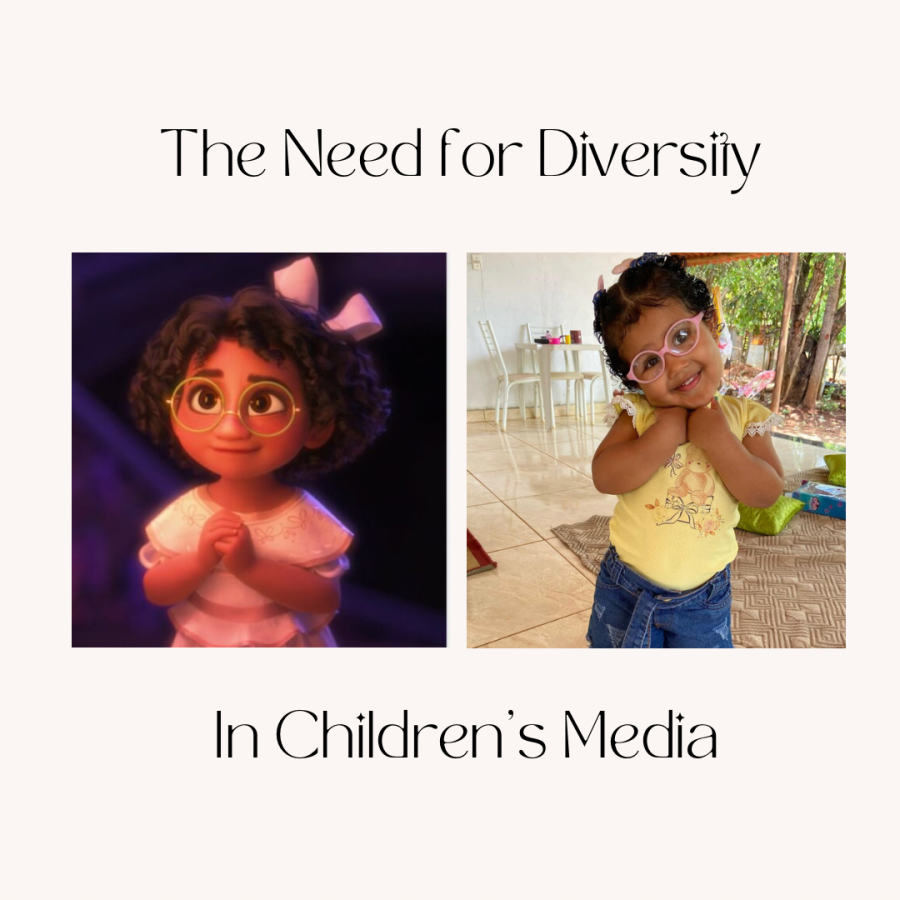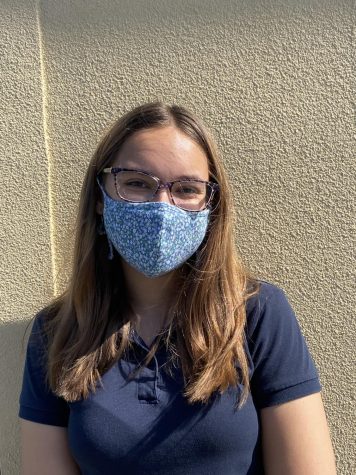What’s Up in the Writing World?: The Need for Diversity in Children’s Media
Left: Young Mirabel from Disney’s Encanto Right: 2-year-old girl who went viral for looking like Mirabel.
January 27, 2022
With a hit soundtrack and in-depth analysis of intergenerational trauma, Disney’s latest children’s movie, Encanto, is dominating the pop-culture scene. According to the New York Times, Encanto remains at the top of the box office. Yet, the hit songs and underlying theme aren’t the only reasons for Encanto’s success. Encanto embodies the type of representation that many Latinos are yearning for in media. The characters in Encanto represent a wide array of people in the community, which is a breath of fresh air from the normally stagnant Latino representation in media.
Apart from the usual stereotypes, Encanto’s characters sport a variety of skin tones, body types, and personalities. This is not only a huge win for representation in media, but specifically for children’s media. There is a lack of representation in children’s media especially, with many children’s books and movies centered around a white protagonist. According to Kathleen T. Horning, director of the University of Wisconsin-Madison’s Cooperative Children’s Book Center, racial diversity in children’s books have been picking up since 2014. Yet, in 2020, books centered around Latino characters went from 6.3% to 6.2%.
Nina Crews, illustrator of children’s book, “A Girl Like Me,” states that, “When you see yourself reflected in the pages of a book, you’re part of the conversation, part of the story. You’re not ignored. It gives you a sense of ownership to the world that you’re in… Every child deserves that.”
Fans worldwide have reveled in the representation Encanto provides. Many adults relate to the underlying themes in Encanto, such as character Luisa’s stress from holding the family together to character Isabella’s heartache from trying to be the perfect child. Similarly, many children eagerly watch characters who look like them sing and dance on screen.
A viral video of 2-year-old Manu Araújo Marques shows her pointing at a young Mirabel on TV exclaiming in Portuguese “it’s me, mommy! It’s me!” Manu’s mother points out the importance of representation in children’s media, stating, “There’s nothing better than seeing your child’s joy- especially being represented in a Disney movie…. Just as she is being represented by a princess, I want other children to feel the same joy as hers- the same magic!”
“Kids do have a different kind of connection when they see a character that looks like them or they experience a plot or a theme that relates to something they’ve experienced in their lives,” said Jane Fleming, an assistant professor at the Erikson Institute.
Ellen Oh, CEO of the grassroots advocacy nonprofit We Need Diverse Books, claims that a barrier to diversity in children’s books is the myth that books about people of color don’t sell. “Because of this myth, publishing never gives these books a chance,” Oh claims. Furthermore, the few books that are about Latino protagonists are often riddled with stereotypes. Kimberly Blake, a teacher at Bayard Taylor Elementary in Philadelphia, states that it is difficult to find books about Latino children that are “about normal everyday people.”


